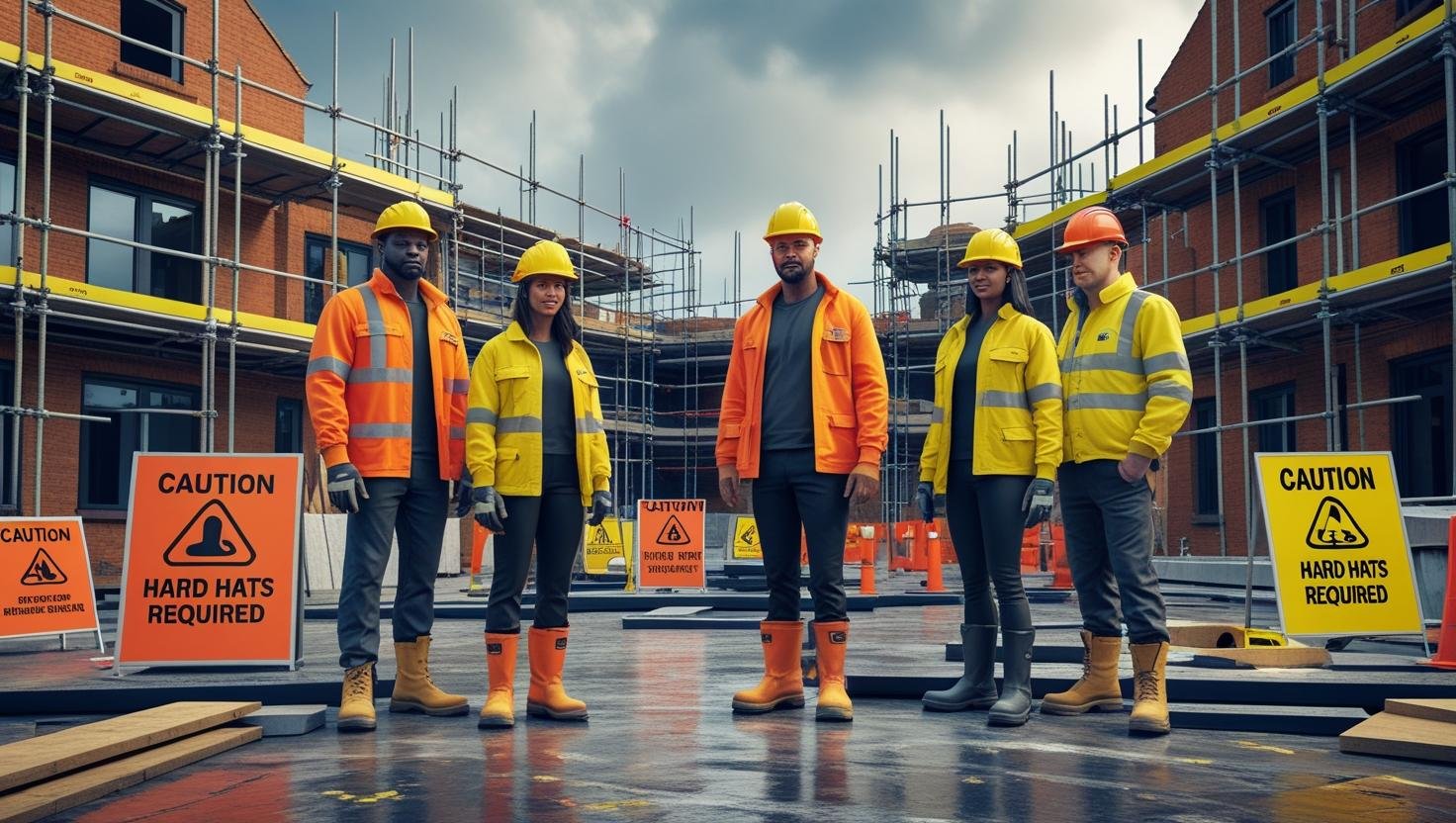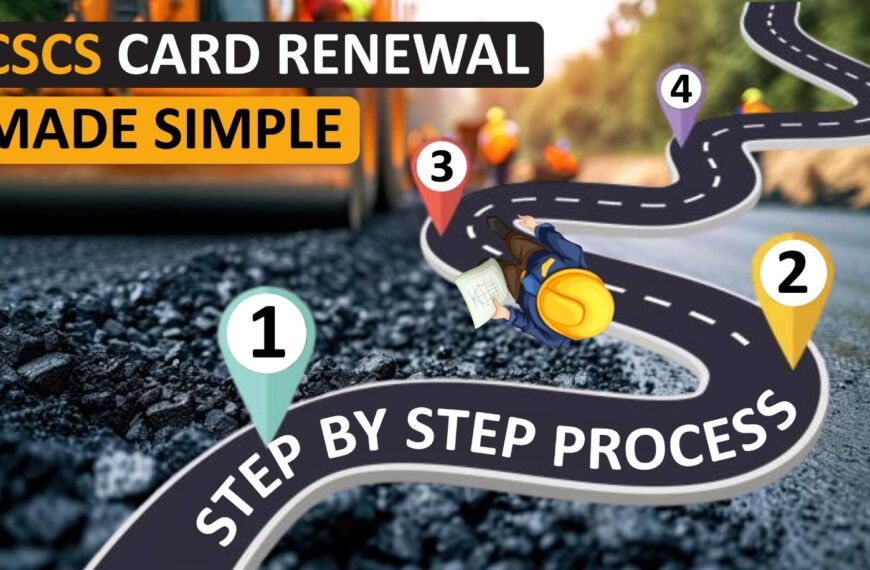One of the riskiest occupations in the UK is construction. Every year, serious accidents happen on construction sites safety many of them could be prevented with better safety awareness. Whether you’re a worker, site manager, or employer, knowing and following simple safety rules can literally save lives.
In this guide, we’ll cover:
- Why site safety matters
- The top UK safety rules everyone should follow.
- How to prevent common accidents
- Legal requirements and training
1. Why Construction Site Safety is So Important
Construction sites involve heavy machinery, dangerous heights, electrical tools, and moving vehicles.
Without the right precautions, even a minor error might result in:
- Serious injuries or death
- Site shutdowns
- Legal actions and fines
- Project delays
To protect employees, the UK government enforces stringent regulations through the Health and Safety Executive (HSE). But it’s not just about legal compliance — it’s about making sure everyone goes home safe.
2. Top Hazards on UK Construction Sites
Let’s look at the most common dangers:
Hazard: Working at Height
What Can Happen: Worker may fall from ladders, scaffolds or rooftops, leading to broken bones or even death.
Hazard: Moving Equipment
What Can Happen: Being struck by vehicles or machinery can cause serious injuries.
Hazard: Electric Tools
What Can Happen: Faulty or unsafe tools may result in electric shock or burns.
Hazard: Manual Handling
What Can Happen: Lifting heavy items improperly can cause back injuries or muscle strain.
Hazard: Slips and Trips
What Can Happen: Slipping on wet surfaces or tripping over obstacles can lead to fractures or head injuries.
Hazard: Dust and Asbestos
What Can Happen: Breathing in dust or asbestos can cause respiratory issues or even cancer.
Hazard: Noise
What Can Happen: Long-term exposure to loud noise may result in permanent hearing loss.
Understanding these hazards is the first step to prevention.
3. UK Construction Safety Rules Everyone Must Follow
Here are the golden rules every UK construction worker and employer must stick to:
1. Wear Correct PPE (Personal Protective Equipment)
- Helmet, safety boots, hi-vis vest, gloves, eye protection
- PPE must be in good condition
- No excuses — wear it every day
2. Get Proper Site Induction
- New workers must receive a safety briefing
- Learn where first aid kits, fire exits & hazard zones are
3. Follow the RAMS (Risk Assessment & Method Statements)
- Know how the work will be done safely.
- Always ask if you’re not clear about the task plan.
4. Never Ignore Signage
- Signs show danger zones, PPE requirements, or restricted access
- Respect them — they’re there for your safety.
5. Keep Your Work Area Tidy
- Tools, cables, and waste should be cleared
- Most slips & trips happen due to untidy work areas.
6. Report Hazards Immediately
- Broken ladders? Loose scaffolding? Tell the site supervisor at once
- Don’t wait — reporting can prevent accidents.
4. Health & Safety Training: What You Must Know
Training is a legal requirement and a life-saving tool.
All workers on UK sites should have:
CITB Health, Safety and Environment Test (HS&E Test)
- Required for CSCS cards
- Tests your awareness of site risks
Site-Specific Safety Training
- Provided by the employer
- Includes evacuation plan, first-aid, and equipment use
Specialist Safety Training
- For people using machines, working at heights, or handling asbestos
Without safety training, you should not be on-site. Full stop.
5. Legal Responsibilities on a Construction Site (UK Law)
In the UK, safety is not just a guideline — it’s the law.
Employer Duties (under Health and Safety at Work Act 1974):
- Provide PPE
- Train staff on health & safety
- Keep risk assessments updated.
- Maintain safe equipment
Worker Duties:
- Use PPE correctly
- Follow training & rule.s
- Report risks or unsafe behaviour
Failure to follow rules can result in:
- Fines
- Imprisonment
- Site closure
6. What Happens When You Ignore Safety Rules? (Real Incidents)
Case Study – London, 2023:
Without a harness, a worker fell from a third-floor scaffold. He had no proper training. Result?
- Life-changing injuries
- Company fined £100,000
- Supervisor dismissed
Case Study – Manchester, 2022:
Site ignored fire safety drills. Small electrical fire caused panic — no one knew evacuation procedures.
- Fire damage: £30,000
- Project delay: 3 months
Moral? One ignored rule = massive risk
7. Simple Daily Safety Checklist for UK Construction Sites
Use this every day before starting work:
- Is your PPE complete and undamaged?
- Are tools and equipment in good working condition?
- Have you been briefed on today’s tasks?
- Do you know the site hazards for your area?
- Is your work area clean and slip-free?
- Do you know who the first-aider is?
This 2-minute check can prevent lifetime damage.
8. How to Build a Culture of Safety
Safety isn’t one person’s job — it’s a shared responsibility.
Here’s how to establish a secure environment at work:
- Encourage open communication
- Reward safe behaviour
- Hold short toolbox talks daily..
- Ensure management leads by example.
- Train continuously
When workers feel empowered to speak up, the site becomes safer for everyone.
9. How Site Safety is Being Improved by Technology
Modern UK construction is embracing tech for safety too:
- Wearable safety gear – alerts for impact or falls
- Drones – inspect hard-to-reach areas
- AI Cameras – monitor risky behaviours
- Safety apps – real-time risk reports & alerts
These tools are changing how construction safety is managed in 2025.
Conclusion
Construction site safety in the UK is not optional — it’s life-saving.
From wearing your PPE to reporting hazards and getting trained, every small habit contributes to a bigger goal: zero accidents.
By following the simple safety rules discussed here, you’re not just protecting yourself — you’re protecting your entire team.
So next time you walk on-site, remember:
One safety step ignored could be one life lost.
Stay alert. Stay safe.








